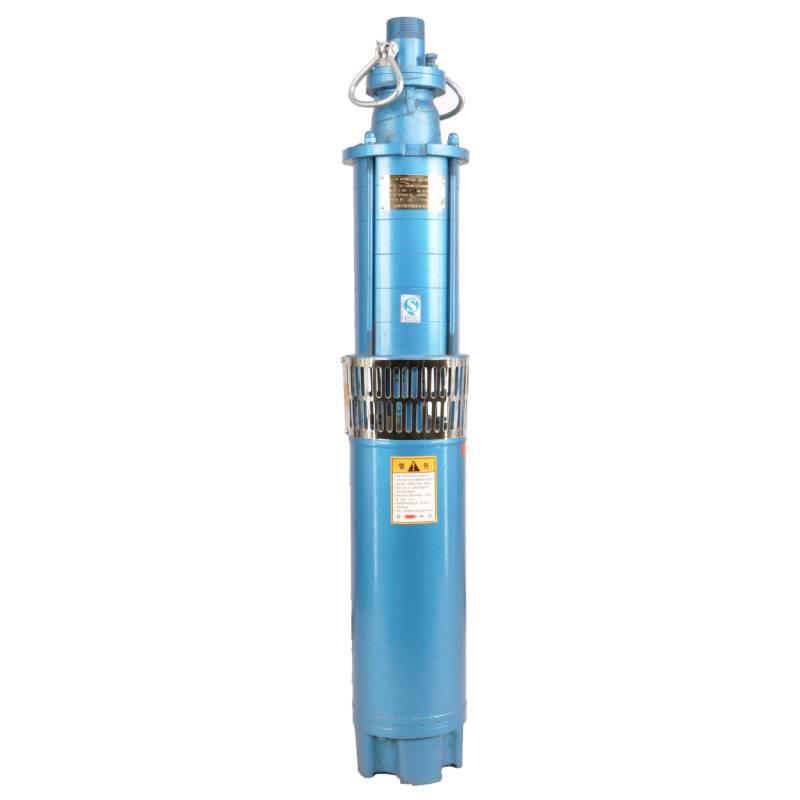Dec . 09, 2024 23:12 Back to list
Exploring the Benefits and Applications of Deep Submersible Pump Technology in Industry
Exploring Deep Submersible Pumps An Essential Technology in Modern Water Management
Deep submersible pumps have become an integral part of various industries, particularly in water management and resource extraction. These specialized pumps are designed to function underwater, providing a reliable solution for moving water from great depths—essential for applications such as groundwater extraction, irrigation, and even oil and gas production. In this article, we will explore the significance, applications, and advantages of deep submersible pumps, as well as the technical aspects that make them a preferred choice for many engineers and operators.
Understanding Deep Submersible Pumps
A deep submersible pump typically consists of a motor, pump stages, and a discharge section housed within a robust casing. The motor is located at the pump's base, submerged beneath the water level, which allows the pump to function efficiently without needing priming. The design is engineered to withstand high pressure and corrosive environments, making these pumps suitable for deep wells and other challenging conditions.
Applications Across Industries
The primary application of deep submersible pumps is groundwater extraction. In agricultural settings, they are employed to draw water for irrigation, ensuring crops receive adequate hydration, especially in arid regions. Additionally, these pumps are used in municipal water supply systems, where they help provide clean drinking water by accessing aquifers deep underground.
In the oil and gas industry, deep submersible pumps play a critical role in extracting hydrocarbons from beneath the earth’s surface. They can also be used in aquaculture, helping to maintain water levels in fish farms, and in wastewater treatment facilities, where they aid in moving effluent through various treatment processes.
Advantages of Deep Submersible Pumps
deep submersible pump

1. Efficiency One of the standout features of deep submersible pumps is their ability to operate efficiently at great depths. They can maintain a high flow rate while consuming less energy compared to other pump types. This energy efficiency translates to lower operational costs, making them an attractive option for long-term projects.
2. Reliability With their robust design and durable materials, deep submersible pumps are built to last in demanding conditions. They are less susceptible to mechanical failure, reducing downtime and maintenance costs. This reliability is crucial in remote areas where access to repair services may be limited.
3. Adaptability These pumps can be customized to meet specific requirements, such as varying flow rates and well depths. Whether it's a small agricultural application or a large-scale industrial operation, deep submersible pumps can be tailored to fit a wide range of needs.
4. Submersible Design By being placed underwater, deep submersible pumps eliminate the need for additional priming mechanisms common with above-ground pumps. This submersible nature also minimizes the risk of cavitation, which can damage pumps and reduce efficiency.
5. Environmental Considerations Compared to surface pumps, deep submersible pumps can have a lesser environmental impact. Their ability to extract water from deep aquifers allows for sustainable water management practices, ensuring that water is taken without causing surface-level disruption.
Conclusion
Deep submersible pumps are a testament to modern engineering and innovation in water management and resource extraction. Their efficiency, reliability, and ability to operate at great depths make them an indispensable tool across various industries. As we face challenges such as water scarcity and the need for more sustainable resource management, the role of deep submersible pumps will undoubtedly continue to expand. Whether for agricultural, municipal, or industrial applications, these pumps provide an effective solution, ensuring that we can harness and manage essential water resources efficiently and responsibly. The evolution of technology in this field will likely lead to even more advancements, benefiting future generations and the planet.
-
Submersible Water Pump: The Efficient 'Power Pioneer' of the Underwater World
NewsJul.01,2025
-
Submersible Pond Pump: The Hidden Guardian of Water Landscape Ecology
NewsJul.01,2025
-
Stainless Well Pump: A Reliable and Durable Pumping Main Force
NewsJul.01,2025
-
Stainless Steel Submersible Pump: An Efficient and Versatile Tool for Underwater Operations
NewsJul.01,2025
-
Deep Well Submersible Pump: An Efficient 'Sucker' of Groundwater Sources
NewsJul.01,2025
-
Deep Water Well Pump: An Efficient 'Sucker' of Groundwater Sources
NewsJul.01,2025
-
 Submersible Water Pump: The Efficient 'Power Pioneer' of the Underwater WorldIn the field of hydraulic equipment, the Submersible Water Pump has become the core equipment for underwater operations and water resource transportation due to its unique design and excellent performance.Detail
Submersible Water Pump: The Efficient 'Power Pioneer' of the Underwater WorldIn the field of hydraulic equipment, the Submersible Water Pump has become the core equipment for underwater operations and water resource transportation due to its unique design and excellent performance.Detail -
 Submersible Pond Pump: The Hidden Guardian of Water Landscape EcologyIn courtyard landscapes, ecological ponds, and even small-scale water conservancy projects, there is a silent yet indispensable equipment - the Submersible Pond Pump.Detail
Submersible Pond Pump: The Hidden Guardian of Water Landscape EcologyIn courtyard landscapes, ecological ponds, and even small-scale water conservancy projects, there is a silent yet indispensable equipment - the Submersible Pond Pump.Detail -
 Stainless Well Pump: A Reliable and Durable Pumping Main ForceIn the field of water resource transportation, Stainless Well Pump has become the core equipment for various pumping scenarios with its excellent performance and reliable quality.Detail
Stainless Well Pump: A Reliable and Durable Pumping Main ForceIn the field of water resource transportation, Stainless Well Pump has become the core equipment for various pumping scenarios with its excellent performance and reliable quality.Detail
